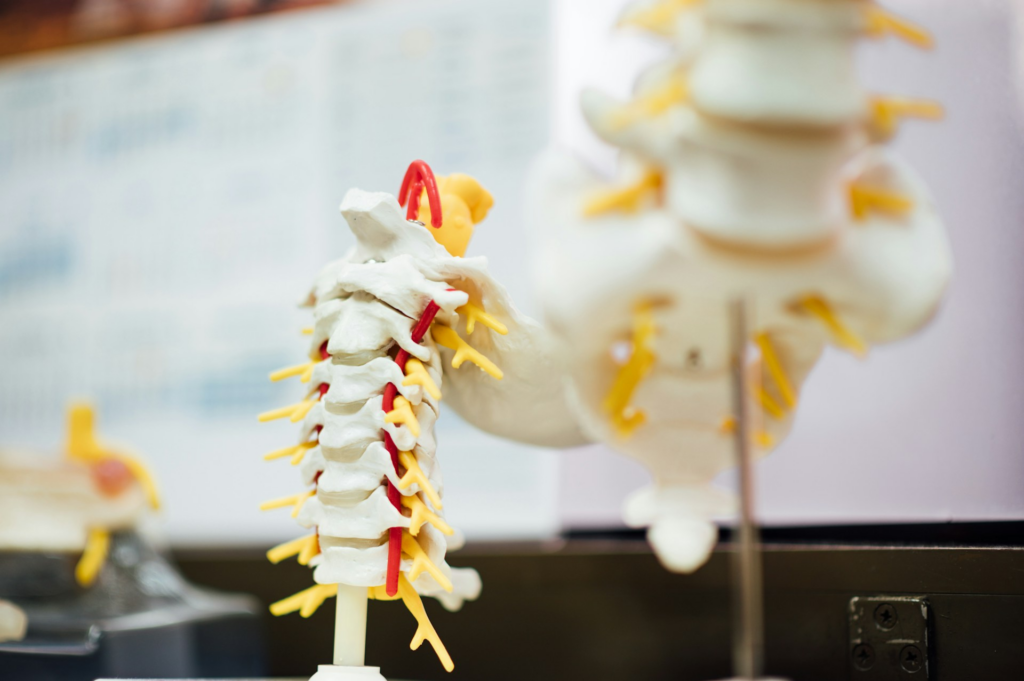Sciatica is a common and often debilitating condition that affects millions of people worldwide. It occurs when the sciatic nerve, the largest nerve in the body, becomes irritated or compressed, leading to a range of symptoms that can significantly impact daily life.
What Is Sciatica?
The sciatic nerve originates in the lower back and extends down the back of each leg. It is responsible for controlling muscles in the lower leg and providing sensation to the thighs, legs, and feet. Sciatica occurs when this nerve becomes compressed or irritated, leading to pain, numbness, tingling, or weakness along the path of the nerve.
Causes Of Sciatica
Sciatica can be caused by various factors, including:
Herniated Disk
A herniated or bulging disk occurs when the soft, gel-like center of a spinal disk protrudes through a tear in the tough outer layer. When this happens in the lower back, it can put pressure on the nearby sciatic nerve roots, causing pain, numbness, or weakness in the legs. The herniated disk may result from age-related wear and tear, sudden injury, or improper lifting techniques. As the disk material presses against the nerve, it can lead to inflammation and irritation, resulting in sciatica symptoms.
Spinal Stenosis
Spinal stenosis is a condition characterized by the narrowing of the spinal canal, which houses the spinal cord and nerve roots. When the spinal canal narrows, it can compress the nerves within, including the sciatic nerve. This narrowing may be due to age-related changes, such as the formation of bone spurs or thickened ligaments, or it may result from conditions like osteoarthritis. As the space for the nerves decreases, they may become pinched or irritated, leading to sciatica symptoms.
Muscle Weakness
Weakness in the muscles of the lower back and pelvis can contribute to sciatic nerve compression. When these muscles are weak, they may not adequately support the spine, leading to poor posture and increased pressure on the sciatic nerve. Weakness in the core muscles can also affect stability and alignment, increasing the risk of injury or nerve irritation. Strengthening exercises targeting the core and lower body muscles can help alleviate sciatica by improving spinal support and reducing strain on the nerves.
Prolonged Sitting
Sitting for extended periods, especially with poor posture, is a common cause of sciatica. When you sit for long periods, especially in a slouched or hunched position, it can increase pressure on the lumbar spine and compress the sciatic nerve. Additionally, sitting may cause the muscles surrounding the spine to become tight and stiff, further exacerbating nerve compression. It’s essential to take regular breaks from sitting, stretch, and maintain proper posture to prevent sciatica from developing or worsening.
Trauma Or Injury
Accidents or injuries that affect the spine or surrounding muscles can also result in sciatica. Traumatic events such as car accidents, falls, or sports injuries can cause damage to the spinal structures or soft tissues, leading to inflammation, swelling, and nerve compression. Even minor injuries, if left untreated, can contribute to chronic pain and dysfunction. It’s crucial to seek medical attention following any trauma to the spine to assess and address potential nerve damage or compression.
Symptoms of Sciatica
Sciatica manifests in a variety of symptoms, ranging from sharp, shooting pain to numbness and tingling sensations, all of which can significantly impact one’s daily activities and quality of life. Common symptoms include:
1. Pain
One of the hallmark symptoms of sciatica is a sharp, shooting pain that radiates from the lower back down the back of one leg. This pain can vary in intensity, from mild discomfort to severe, debilitating pain. It may worsen with movement, prolonged sitting, or coughing and sneezing.
2. Numbness And Tingling
People with sciatica often experience a sensation of numbness or tingling in the affected leg or foot. This sensation, known as paresthesia, can range from mild to severe and may occur intermittently or persistently. It typically follows the path of the sciatic nerve and may be accompanied by other symptoms such as pain or weakness.
3. Muscle Weakness
Weakness in the affected leg is another common symptom of sciatica. This weakness may make it difficult to walk, stand, or perform everyday activities such as climbing stairs or lifting objects. It can result from nerve compression or irritation, leading to reduced muscle function and coordination in the affected limb.
4. Difficulty Moving
Sciatica can cause pain and stiffness in the lower back or leg, making it challenging to move or bend. Activities that involve bending forward, twisting, or lifting may exacerbate symptoms, leading to further discomfort and limitation of movement. Individuals with sciatica may find it difficult to maintain proper posture or perform tasks that require flexibility and range of motion.
5. Bowel Or Bladder Dysfunction
In severe cases, sciatica can affect bowel or bladder control, a condition known as cauda equina syndrome. Symptoms may include difficulty urinating or defecating, loss of sensation in the genital area, or loss of bowel or bladder control. Cauda equina syndrome is a medical emergency and requires immediate medical attention to prevent permanent nerve damage or paralysis.
Diagnosis Of Sciatica
Diagnosing sciatica involves a thorough evaluation of the patient’s symptoms, medical history, and various diagnostic tests. Due to the diverse nature of the condition and its potential causes, healthcare providers utilize a combination of methods to accurately identify the underlying factors contributing to the patient’s discomfort. The diagnosis process includes:
1. Medical History Review
The first step in diagnosing sciatica is obtaining a comprehensive medical history from the patient. This includes information about the onset and duration of symptoms, any previous injuries or medical conditions, and any factors that worsen or alleviate the pain. Understanding the patient’s medical background can provide valuable insights into the possible causes of their sciatica.
2. Physical Examination
A thorough physical examination is essential in evaluating the patient’s symptoms and identifying any physical signs of sciatica. During the exam, the healthcare provider may assess the patient’s posture, range of motion, reflexes, and muscle strength. They may also perform specific maneuvers to reproduce the patient’s pain or assess for signs of nerve compression.
3. Neurological Assessment
A neurological assessment is a crucial component of diagnosing sciatica. This involves testing the patient’s sensory and motor functions, including their ability to feel light touch, differentiate between sharp and dull sensations, and move their legs and feet against resistance. Abnormalities in these tests, such as decreased sensation or muscle weakness, can indicate nerve involvement.
4. Imaging Studies
Imaging tests are often used to visualize the structures of the spine and identify any abnormalities that may be contributing to the patient’s sciatica. Common imaging studies include:
X-rays: X-rays provide detailed images of the bones in the spine and can help identify any fractures, bone spurs, or abnormalities in the vertebrae.
MRI (Magnetic Resonance Imaging): MRI scans use magnetic fields and radio waves to produce detailed images of the soft tissues in the spine, including the discs, nerves, and surrounding structures. This imaging modality is particularly useful for detecting herniated discs, spinal stenosis, and other soft tissue abnormalities.
CT (Computed Tomography) Scan: CT scans provide cross-sectional images of the spine and can help visualize bony abnormalities, such as fractures or spinal stenosis. They are often used in conjunction with other imaging modalities to obtain a comprehensive view of the spine.
5. Electromyography (EMG) And Nerve Conduction Studies
In some cases, electromyography (EMG) and nerve conduction studies may be performed to assess the electrical activity and function of the nerves and muscles. These tests can help determine the extent of nerve damage or compression and identify the specific nerve roots affected by sciatica.

Treatment for sciatica aims to alleviate pain, reduce inflammation, and address the underlying cause. Common treatment options include:
Medications: Over-the-counter pain relievers, such as ibuprofen or naproxen, may help reduce pain and inflammation. In some cases, prescription medications or muscle relaxants may be prescribed.
Physical Therapy: A structured exercise program designed to strengthen the muscles supporting the spine and improve flexibility can help alleviate sciatica symptoms.
Epidural Steroid Injections: Injections of corticosteroids directly into the affected area of the spine can reduce inflammation and provide temporary pain relief.
Surgery: In severe cases where conservative treatments fail to provide relief, surgery may be recommended to relieve pressure on the sciatic nerve.
Preventing Sciatica
While not all cases of sciatica can be prevented, there are steps you can take to reduce your risk, including:
Maintaining good posture: Practice proper posture when sitting, standing, and lifting heavy objects to reduce strain on the spine.
Regular Exercise: Engage in regular physical activity to strengthen the muscles supporting the spine and improve flexibility.
Avoid Prolonged Sitting: Take frequent breaks from sitting and avoid sitting for long periods to prevent pressure on the sciatic nerve.
How Injury Centers of Brevard Can Help Alleviate Sciatica Pain
Sciatica can cause significant discomfort and affect your quality of life, but with proper diagnosis and treatment, many people find relief from their symptoms. If you experience persistent back or leg pain, numbness, or weakness, it’s essential to seek medical attention promptly. By understanding the causes, symptoms, and treatment options for sciatica, you can take steps to manage your condition and improve your overall well-being.
At Injury Centers of Brevard, we specialize in providing comprehensive care for individuals suffering from sciatica pain and related conditions. Our team of experienced healthcare professionals understands the complex nature of sciatica, which involves compression or irritation of the sciatic nerve due to factors such as spinal nerve impingement or lumbar radiculopathy.
Using state-of-the-art diagnostic techniques, we identify the underlying causes of sciatica pain and develop personalized treatment plans tailored to each patient’s needs. Whether the pain is mild or severe, our goal is to alleviate discomfort and improve quality of life.
Our services include chiropractic care, physical therapy, and interventional procedures to address sciatic nerve impingement and reduce inflammation. We also educate patients on risk factors such as prolonged sitting and provide preventive measures to minimize the risk of future episodes. If you’re experiencing sciatic nerve pain, don’t suffer in silence. Contact us today to schedule a consultation and take the first step towards relief.

